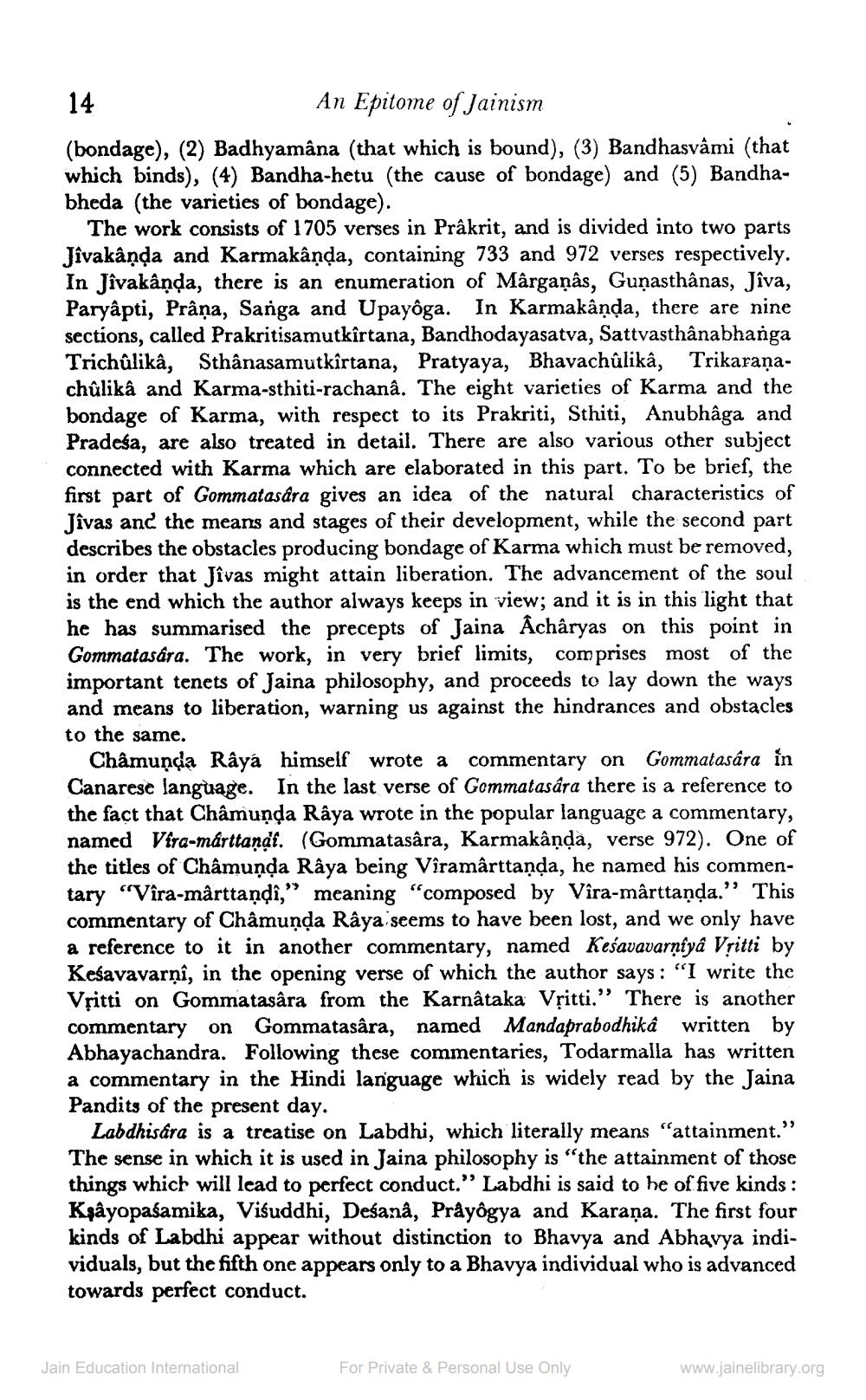________________
14
An Epitome of Jainism (bondage), (2) Badhyamâna (that which is bound), (3) Bandhasvâmi (that which binds), (4) Bandha-hetu (the cause of bondage) and (5) Bandhabheda (the varieties of bondage).
The work consists of 1705 verses in Prakrit, and is divided into two parts Jîvakânda and Karmakânda, containing 733 and 972 verses respectively. In Jivakânda, there is an enumeration of Mârganâs, Gunasthầnas, Jiva, Paryâpti, Prâņa, Sanga and Upayôga. In Karmakânda, there are nine sections, called Prakritisamutkîrtana, Bandhodayasatva, Sattvasthanabhanga Trichûlika, Sthanasamutkîrtana, Pratyaya, Bhavachûlika, Trikaranachûlikâ and Karma-sthiti-rachanâ. The eight varieties of Karma and the bondage of Karma, with respect to its Prakriti, Sthiti, Anubhâga and Pradeśa, are also treated in detail. There are also various other subject connected with Karma which are elaborated in this part. To be brief, the first part of Gommatasåra gives an idea of the natural characteristics of Jivas and the means and stages of their development, while the second part describes the obstacles producing bondage of Karma which must be removed, in order that Jivas might attain liberation. The advancement of the soul is the end which the author always keeps in view; and it is in this light that he has summarised the precepts of Jaina Acharyas on this point in Gommatasara. The work, in very brief limits, comprises most of the important tenets of Jaina philosophy, and proceeds to lay down the ways and means to liberation, warning us against the hindrances and obstacles to the same.
Châmunca Râyá himself wrote a commentary on Gommatasâra în Canarese language. In the last verse of Gommatasära there is a reference to the fact that Châmunda Râya wrote in the popular language a commentary, named Vira-márttanat. (Gommatasara, Karmakâņda, verse 972). One of the titles of Châmunda Râya being Viramârttaņda, he named his commentary "Vîra-mârttandi," meaning "composed by Vira-mârttaņda." This commentary of Châmunda Râya seems to have been lost, and we only have a reference to it in another commentary, named Keśavavarnfya Vritti by Keśavavarni, in the opening verse of which the author says: “I write the Vșitti on Gommatasâra from the Karnataka Vritti." There is another commentary on Gommatasara, named Mandaprabodhikâ written by Abhayachandra. Following these commentaries, Todarmalla has written a commentary in the Hindi language which is widely read by the Jaina Pandits of the present day.
Labdhisára is a treatise on Labdhi, which literally means "attainment." The sense in which it is used in Jaina philosophy is "the attainment of those things which will lead to perfect conduct." Labdhi is said to be of five kinds : Kpâyopaśamika, Visuddhi, Desanâ, Präyôgya and Karaņa. The first four kinds of Labdhi appear without distinction to Bhavya and Abhavya individuals, but the fifth one appears only to a Bhavya individual who is advanced towards perfect conduct.
Jain Education International
For Private & Personal Use Only
www.jainelibrary.org




